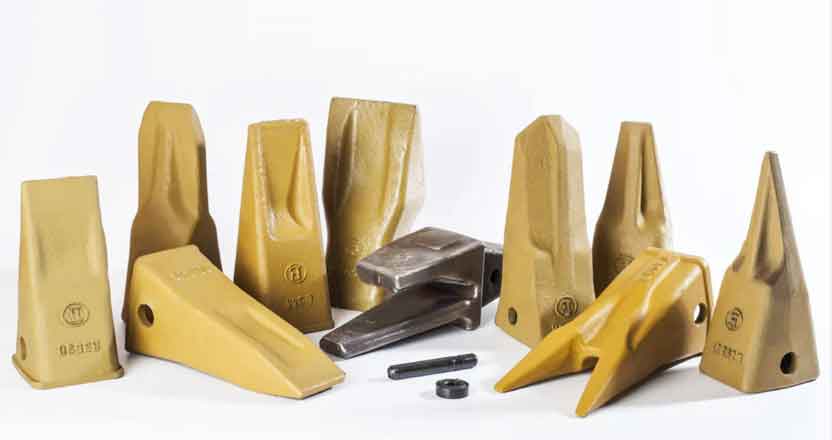
Excavator bucket teeth technology has witnessed significant advancements in recent years, revolutionizing the field of excavation and enhancing the efficiency, productivity, and durability of these essential components. Here are some notable innovations in excavator bucket teeth technology:
- Advanced Materials: Manufacturers have been exploring new materials and alloys with enhanced properties to improve the durability and wear resistance of excavator bucket teeth. For example, the use of tungsten carbide inserts or overlays on the tooth tips significantly improves their hardness and abrasion resistance, enabling them to withstand more demanding excavation conditions.
- Self-Sharpening Teeth: Traditional bucket teeth tend to wear down over time, leading to reduced digging efficiency. However, self-sharpening teeth have been developed to address this issue. These teeth are designed with a unique shape and profile that allows them to maintain sharp edges throughout their lifespan. The self-sharpening feature ensures consistent digging performance without the need for frequent replacements.
- Quick-Change Systems: Traditional bucket teeth replacement can be a time-consuming process, requiring specialized tools and equipment. Quick-change systems have been introduced to simplify and expedite the tooth replacement process. These systems allow operators to replace bucket teeth quickly and easily without the need for additional tools, reducing downtime and increasing overall productivity.
- Wear Monitoring Technology: Real-time wear monitoring systems have been integrated into excavator bucket teeth to provide operators with valuable information about the condition of the teeth. These systems utilize sensors or embedded indicators to measure wear levels and alert operators when teeth reach a specific wear threshold. By enabling proactive maintenance and timely replacement, wear monitoring technology helps optimize performance and extend the life of the teeth.
- Improved Tooth Configurations: Innovative tooth configurations have been developed to enhance digging performance in various soil types and applications. For example, specialized teeth with serrated edges or shaped profiles offer increased penetration and digging force, allowing for more efficient excavation in challenging conditions. These tooth configurations are designed to minimize wear and maximize productivity.
- Enhanced Locking Mechanisms: The connection between the bucket teeth and the bucket adapter has also seen improvements. Advanced locking mechanisms, such as integrated locking pins or wedge-lock systems, provide a more secure and reliable attachment, reducing the risk of tooth detachment during operation. These enhanced locking mechanisms improve safety and minimize the need for frequent tightening or adjustments.
- Digitization and Automation: Excavator bucket teeth technology is also being integrated with digital solutions and automation. IoT (Internet of Things) sensors and telematics systems can collect data on tooth performance, wear rates, and operating conditions. This data can be analyzed to optimize tooth usage, predict maintenance needs, and improve overall excavation processes. Additionally, automation technologies, such as machine learning algorithms and robotic excavators, are being developed to enhance excavation efficiency and reduce human intervention.
These innovations in excavator bucket teeth technology have significantly improved the durability, performance, and operational efficiency of excavators. They enable operators to tackle more challenging excavation tasks, minimize downtime, and reduce maintenance costs, ultimately revolutionizing the field of excavation and construction.
